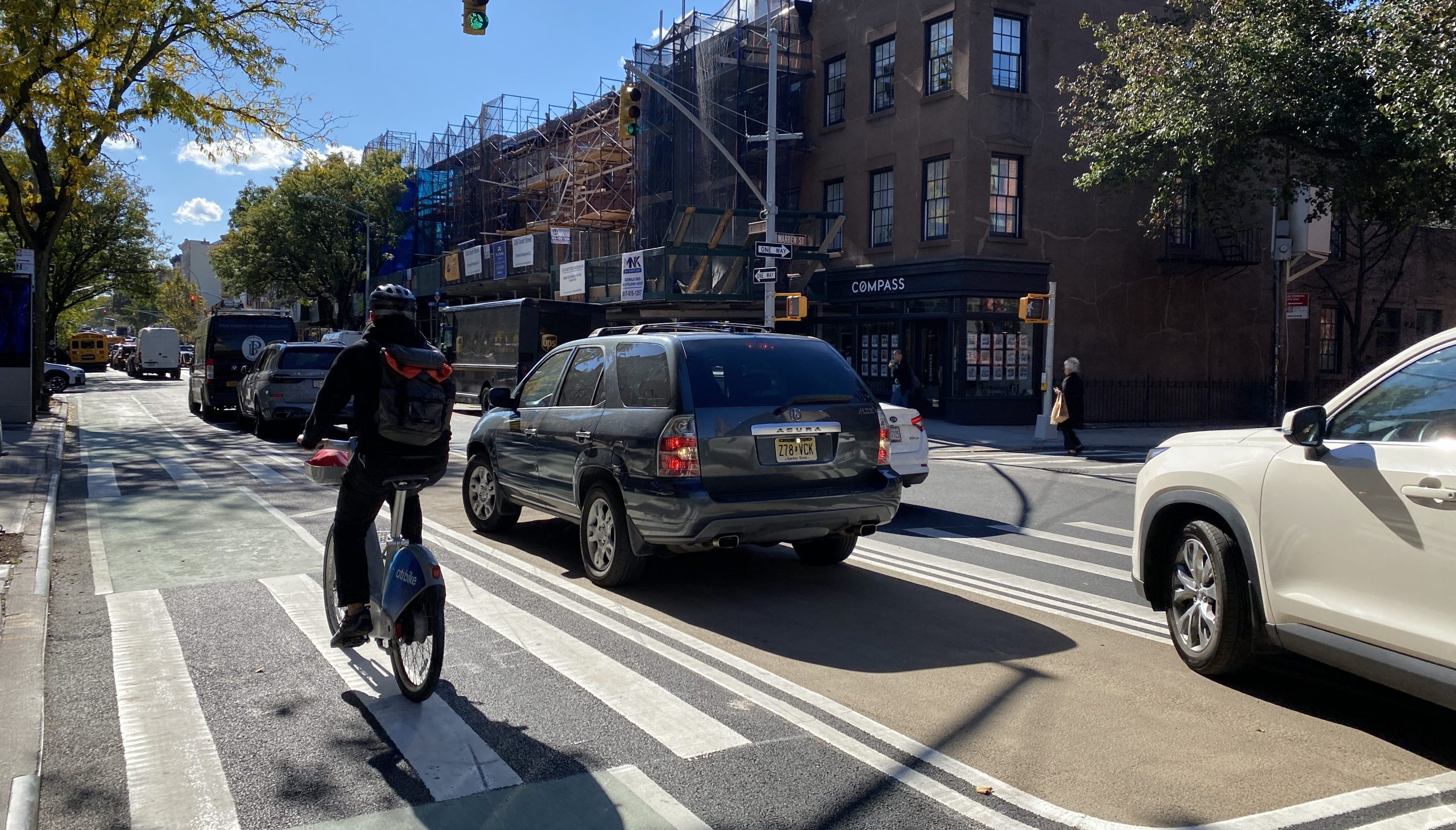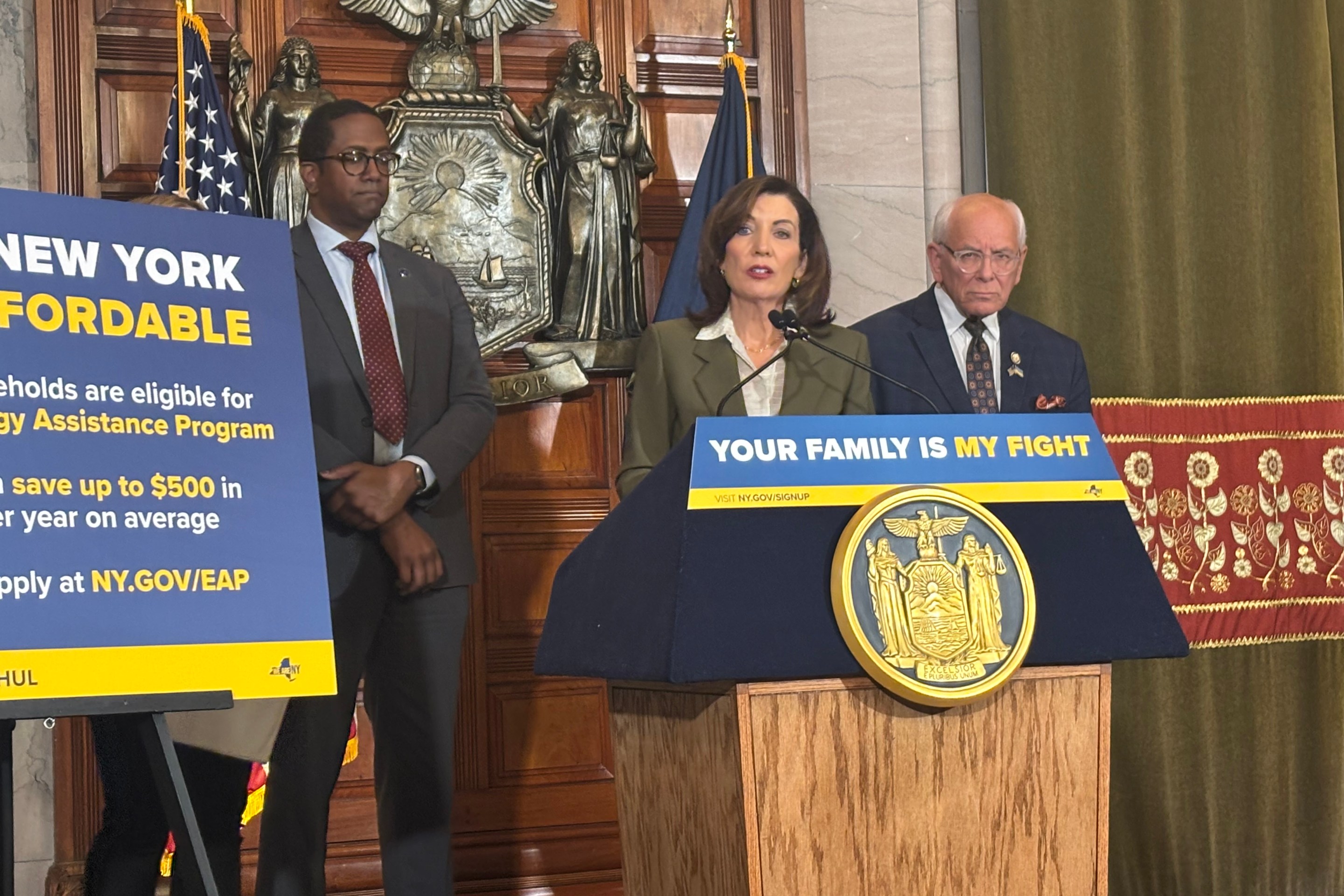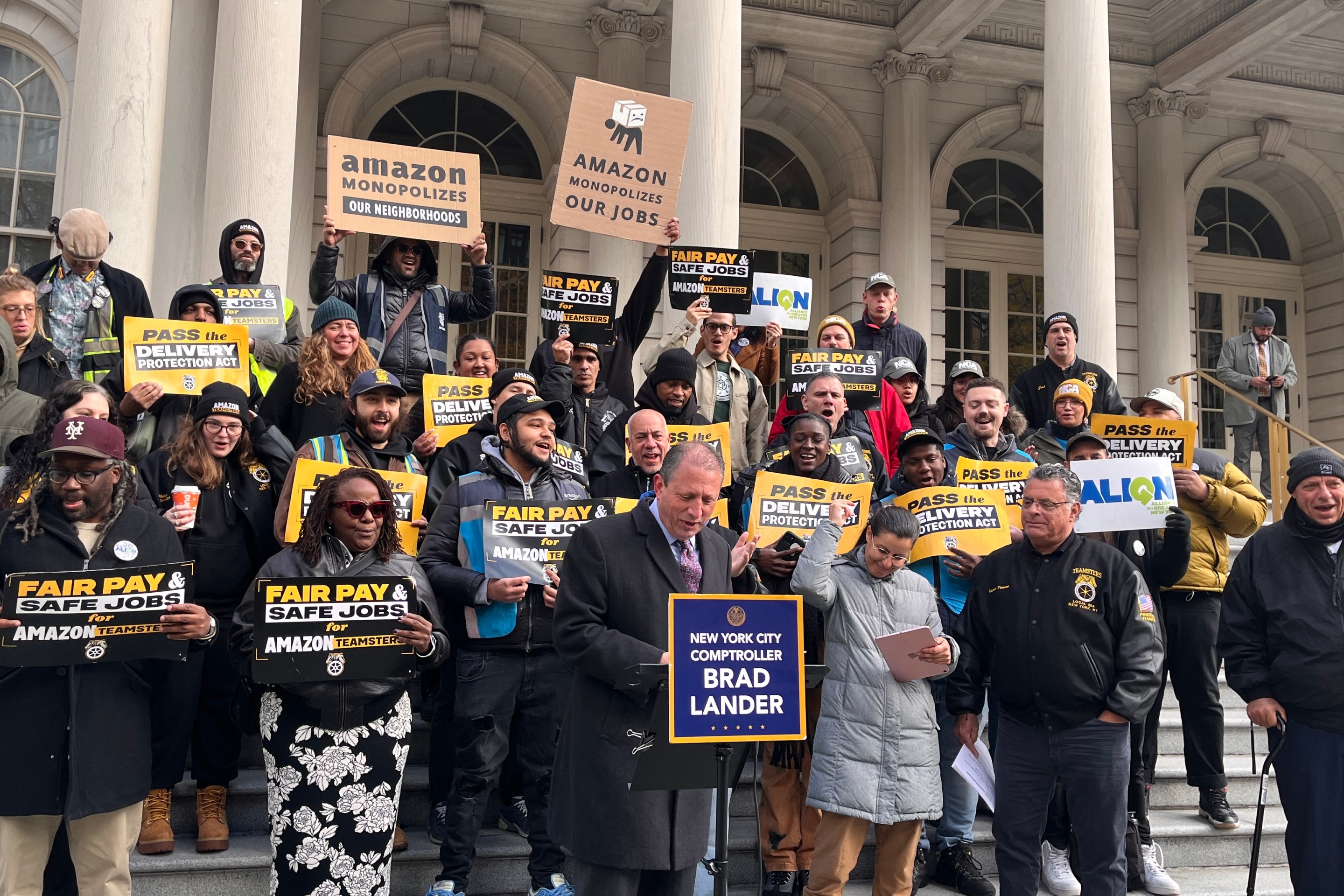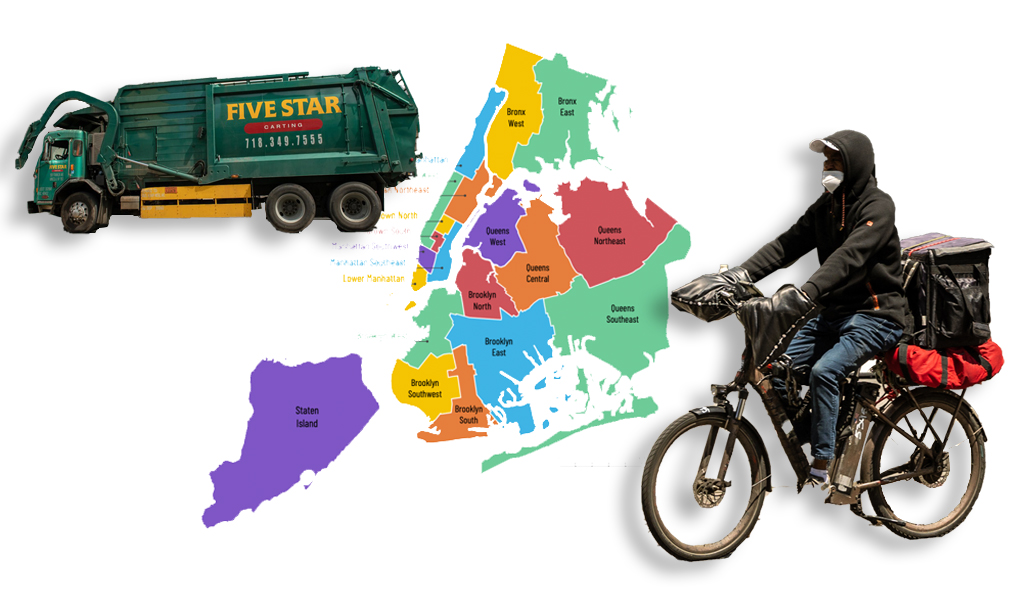It's a tale as old time.
Opponents of a brand new bike lane on Court Street in Brooklyn have sued to undo the safety upgrade, citing the long-debunked claim that it will hurt businesses and make the street less safe – an argument that time and again have failed to persuade judges during similar legal challenges.
The Department of Transportation has repeatedly asserted its right to redesign streets to make them safer, and backed up those changes with data showing consistent crash injury reductions for all road users and a boost for area businesses.
Longtime advocates said the latest case by a local merchants group was just more of the same complaints that shouldn't sway the courts this time either.
"We’ve seen these types of suits get filed and then not succeed, and this shouldn’t be any different," said Eric McClure, the executive director of StreetsPAC. "They have a legal right to seek redress through the courts, but I don’t anticipate that will be successful."
DOT has nearly finished installing a parking-protected bike lane on the strip and removed one of two car travel lanes, from Schermerhorn Street to Hamilton Avenue.
Some business owners along the corridor recently revived the dormant Court Street Merchants Association to fundraise against the redesign, and late on Friday filed a so-called Article 78 petition [PDF] challenging the overhaul as "arbitrary and capricious." (The suit was first reported by the Brooklyn Eagle.)
"The DOT plan would adversely affect all members of the Court Street community," the petitioners wrote, before singling out cyclists, saying the city was putting those on two wheels over everyone else. The merchants – who did not indicate in court papers that they have any credentials as traffic engineers – also accuse the city of failing to consider an unprotected bike lane, "which would provide a dedicated route for cyclists without undermining the interests of all other parties." (Painted bike lanes are widely acknowledge to be nothing more than double-parking lanes.)
The plaintiffs wrote that the agency's goal of taming the deadly road was nothing but a "thinly veiled pretense" to meet the Adams administration's legal requirement to build 50 miles of new protected bike lanes annually — an odd argument, given that the DOT has consistently failed to follow that city law.
The business group rattled off a laundry list of risks they feared from the redesign, claiming with cherry-picked evidence that it would hurt businesses by impeding deliveries and increase risks local school children, seniors and people with disabilities. The bike lane would also get in the way of drivers accessing churches and obstruct emergency services.
DOT says this is flat out false, and in prior cases and public presentations has offered evidence that protected bike lanes and road diets increase safety for all road users, particularly for seniors, and actually boost businesses.
Transportation planners also get clearance from the Fire Department for their street redesigns to make sure it works for first responders.
In addition, emergency vehicles can use a protected bike lane to breeze past car traffic, as seen here during a recent evening rush hour on Sixth Avenue in Midtown.
An ambulance glides through the midtown rush hour traffic thanks to the 6th Ave bike lane
— Kevin Duggan (@kevinduggan.bsky.social) 2025-10-24T20:43:58.161Z
DOT's field team surveyed local businesses on Court Street, and reps presented the redesign at both local community boards months ahead of time in June.
A DOT rep said the agency is ready to defend its work.
"The redesign of Court Street follows the best safety practices from around the world and is similar to countless streets across New York City," said agency spokesperson Vin Barone. "Protected bike lanes have proven to enhance safety for everyone on the road, while also helping support local businesses."
The agency has been doing this work for the better part of two decades, and its outreach and planning are a well-oiled machine at this point, noted a former city transportation official.
"DOT is completely within its powers doing the Court Street bike lane and they had a robust public process," said Jon Orcutt, a one-time DOT policy chief under the Bloomberg and de Blasio administrations who now is the director of advocacy at Bike New York. "It seems like the incidents of lawsuits has picked up – I don’t know why – but they never work. Sorry, guys."
“Maybe the Bar Association could put out a notice saying, 'Don’t do this, you’re wasting your time and money,'" he added.
Failed lawsuits upon lawsuits
There's been a rash in court challenges against bike lanes during the Adams administration, as his City Hall has shown explicit willingness to bow to special interests to stall or undo street safety projects.
For example, earlier this year over on on 31st Street in Astoria residents sued the city to stop a protected bike lane there, and they even used the same attorney as those on Court Street, Hartley Bernstein.
Bernstein told Streetsblog he was "confident" in his clients' case, but declined to elaborate on why he believed the case would succeed where other similar suits hadn't.
A judge did pause work on 31st Street as attorneys argue their cases, but that redesign was at a much earlier stage with the lanes just lightly stenciled – unlike Court Street, where almost all the markings are fully in place already.
Both cases add to a lengthy of failed lawsuits against DOT questioning its street safety redesigns, where critics repeatedly employed the same disproven concerns about businesses or that they don't actually reduce injuries.
One of the earliest and most prominent lawsuits targeted the two-way protected lane on Prospect Park West 15 years ago.
Connected residents at the time – including Sen. Chuck Schumer's wife, herself a former DOT commissioner – sued the city in the hopes of rolling back the changes, which dragged on for six years.
McClure, a staunch proponent of the Prospect Park West revamp, called that legal battle the "grand daddy of them all." The plaintiffs at the time labeled him as "radical pro-experimental bike lane lobbyist #2" in court papers.
Over the following years, copycats threatened to sue over mere pedestrian islands in Brooklyn and launched a failed legal bid against the Central Park West bike lane, but neither worked.
Another group of businesses and a different law firm sued the city earlier this year unsuccessfully to try to stop a bike lane in Blissville, Queens.
Changes to the local streetscape predictably trigger complaints from some residents, especially those used to driving around the neighborhood, McClure said.
That was the case when DOT installed protected bike lanes on other area corridors like Ninth Street and Fourth Avenue, but after a while, people got used to it.
"Every time there’s big blowback, petitions, and people worrying about how awful it’s going to be, and you give it a couple of months and it’s all fine, and you don’t hear another peep about it," McClure said. "Except for the diehards, nobody’s going to be bothered by it."
Community Board 6, which he chairs, endorsed the redesign when DOT presented it in the spring.
Council Member Lincoln Restler also publicly defended the redesign when Republicans tried to snipe at it.
Joann - not sure if you are familiar with this area, but I am happy to explain how much safer this redesign of Court St makes our Brooklyn community. https://t.co/SqbwkjcmN4
— Lincoln Restler (@LincolnRestler) October 7, 2025
One of the few cases where a judge ruled in favor of removing a bike lane was on three blocks of Bedford Avenue, but the roles were reversed: Adams directed DOT to rip up the bike lane revert back to an unprotected path and bike advocates sued to stop him. The section of unprotected path is now constantly filled with double-parked cars and unloading trucks.
Lawyers in the new case tried to capitalize on that by filing an affidavit about Bedford by DOT's Deputy Commissioner for Transportation Planning and Management Eric Beaton [PDF]. However, that case reinforces that the agency can make changes to the streetscape, as long as they have a rationale behind them.
Advocates called on the city to "hold the line," especially given the potential for a safer street close to dozens of schools and day-care centers.
"There are nearly 30 schools and day-cares near Court Street. This is about saving lives and protecting Brooklyn families," said Ben Furnas, executive director of Transportation Alternatives. "The city must hold the line and protect New Yorkers from being killed in preventable crashes — we must put our children's safety over special interests."






